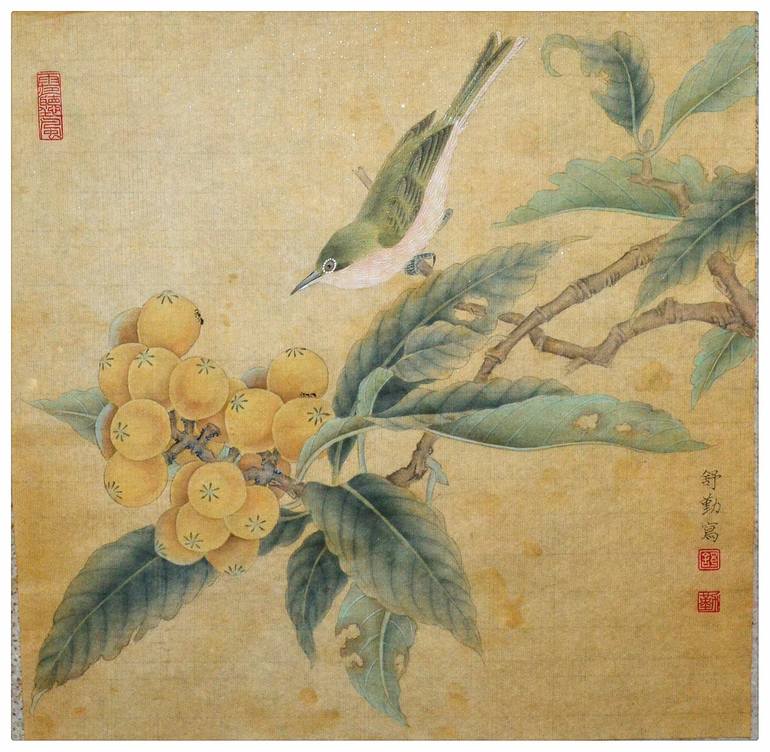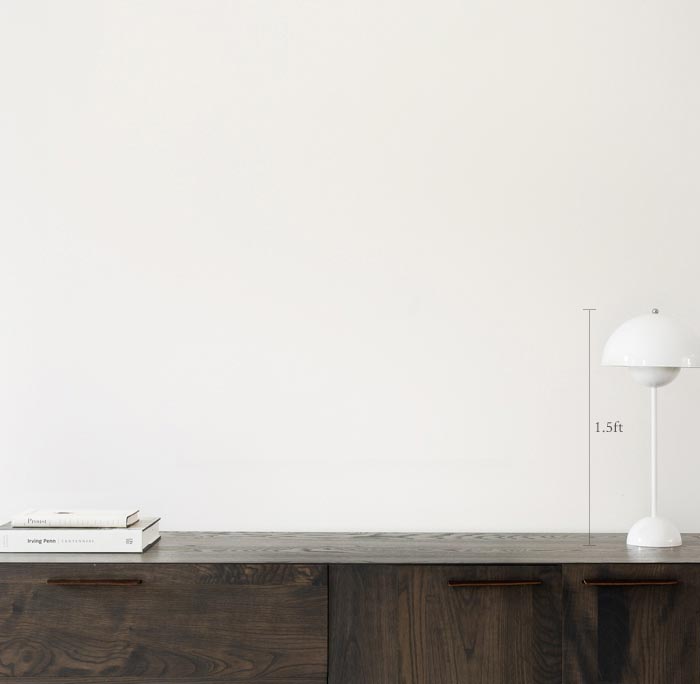


2441 Views
2
View In My Room
Archaizing Ancient Chinese Painting- Loquat Fruit with bird - Original Chinese Gongbi Painting by Qin Shu Painting
Qin Shu
China
Painting, Ink on Paper
Size: 13 W x 13 H x 0.1 D in
Ships in a Crate
2441 Views
2
Artist Recognition

Artist featured in a collection
ABOUT THE ARTWORK
DETAILS AND DIMENSIONS
SHIPPING AND RETURNS
This is an archaized pieced based on a fine work being handed down from Song dynasty. The original ancient painting is kept in the forbidden city in Beijing. Although the size is small, the painting has high reputation in Chinese painting history. Qin used traditional gongbi technique to restore the...
Year Created:
2010
Subject:
Styles:
Mediums:
Painting, Ink on Paper
Rarity:
One-of-a-kind Artwork
Size:
13 W x 13 H x 0.1 D in
Ready to Hang:
Not Applicable
Frame:
Not Framed
Authenticity:
Certificate is Included
Packaging:
Ships in a Crate
Delivery Cost:
Shipping is included in price.
Delivery Time:
Typically 5-7 business days for domestic shipments, 10-14 business days for international shipments.
Returns:
14-day return policy. Visit our help section for more information.
Handling:
Ships in a wooden crate for additional protection of heavy or oversized artworks. Artists are responsible for packaging and adhering to Saatchi Art’s packaging guidelines.
Ships From:
United States.
Need more information?
Need more information?
Qin Shu
China
I am a professional Chinese gongbi painter specializing in Gongbi flower and birds painting, especially in painting peony and lotus flower. This style of art was accomplished in secret in royal palaces and private homes back to ancient China. Only the wealthy could afford such artists. I also specialize in archaizing antique/ancient Chinese gongbi painting. I am a member with a few biggest professional artist organizations in China (1) Signed-up artist with CCTV China Influence Power, Culture China (2) Membership in Chinese Painter Calligrapher Association (3) Membership in Ningbo Federation of Literary and Art Circles, subsidiary of China Artists Association Below are some awards and achievement I received: (1) Outstanding award - from 2013 Group exhibition hosted by CCTV China Influence Power, Culture China, and China Eastern Museum (2) Outstanding award - from 2012 - Group exhibition hosted by CCTV China Influence Power, Culture China, and China Eastern Museum (3) Bronze award - from 2012 Top Traditional Chinese Painting Fall Exhibition and Auction Outstanding award - from 2011 - Group Exhibition Hosted by Artxun (4) Artwork was kept by China Eastern Museum as museum collection (5) Ranked as top 6 artist in Zhejiang Province (equivalent to a State in USA) by Artsun History of Gongbi Painting The gongbi style had its beginnings approximately 2000 years ago during the Han Dynasty (206 BC - 220 AD) when Han's political stability and its prosperity favored the advancement of the arts. These paintings peaked out between the Tang and Song Dynasties (7th to 13th centuries) when these refined paintings were endorsed and collected by the royal families of China. The gongbi artists to perfect this style must totally commit themselves to these techniques. Only the wealthy could afford such artists. This style of art was accomplished in secret in royal palaces and private homes. Peony The peony is among the longest-used flowers in Eastern culture and is one of the smallest living creature national emblems in China. Along with the plum blossom, it is a traditional floral symbol of China, where the peony is called 牡丹 (mÇ”dÄn). It is also known as 富贵花 (fùguìhuÄ) "flower of riches and honor" or 花王 (huawang) "king of the flowers", and is used symbolically in Chinese art. In 1903, the Qing Dynasty declared the peony as the national flower.
Artist Recognition

Artist featured by Saatchi Art in a collection
Why Saatchi Art?
Thousands of
5-Star Reviews
We deliver world-class customer service to all of our art buyers.
Global Selection of Original Art
Explore an unparalleled artwork selection from around the world.
Satisfaction Guaranteed
Our 14-day satisfaction guarantee allows you to buy with confidence.
Support Emerging Artists
We pay our artists more on every sale than other galleries.
